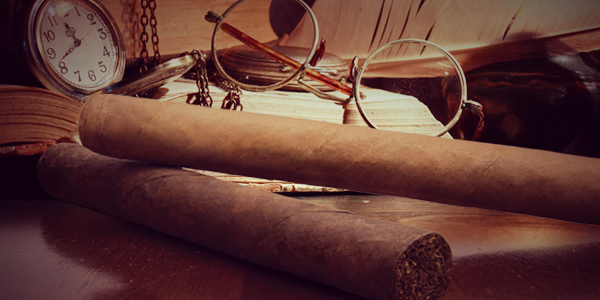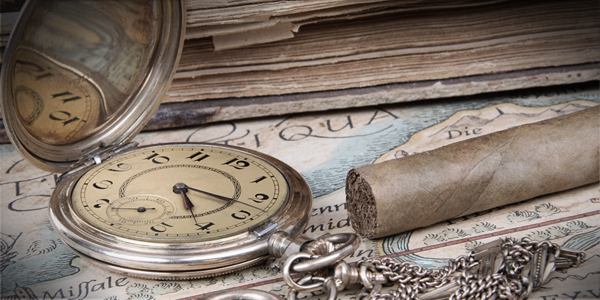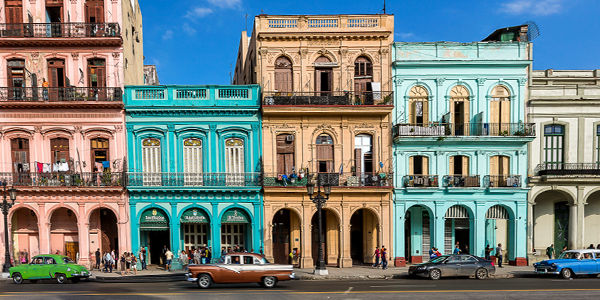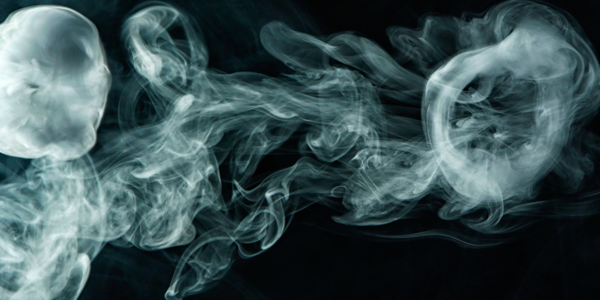The History of Smoking
Sure, we love smoking cigars, but the style of cigar we enjoy today is traced back only to about the 10th century AD. The first evidence of tobacco being smoked, however, was found as early as 4000 BC in shamanistic rituals in the Americas. It’s possible smoking began with cannabis and other hallucinogens in social settings and religious ceremonies from a water pipe, or hookah, in the Middle East and in the South American Andes way back in 5000 BC. Such uses of smoke probably originated with the burning of incense. The Aztecs even had a goddess whose body consisted of tobacco and priests who performed sacrifices while wearing tobacco gourds. Such rituals, European explorers reported, were not likely limited to tobacco as the native priests seemed highly intoxicated from smoke intake. Okay, but did you ever wonder how anyone came up with the idea of smoking anything in the first place?
The Burning Bush Theory
It’s likely that before tobacco was ever smoked, it was eaten, perhaps as many as 18,000 years ago. Early man was hungry and didn’t know what was safe to eat. Historian Iain Gately has written that the basic approach was ‘eat it and then find out’ if it’s safe. Gately also theorized, based on research by anthropologists, that the ‘magic smoke’ of tobacco was ‘discovered’ accidentally – as so many great things are -- by a tired or injured human resting near a burning bush of tobacco. The human breathed in the fumes and felt better. The other possibility, historian Johannes Wilbert writes, is that ancient South American herbalists studied many plants and learned to dry them, grind them up, sniff them and even set fire to them. Tobacco and other plants were used for ‘magico-religious and more or less related medicinal ends.’
The earliest form of smoking tobacco in North America was done with a pipe. The heat from a pipe was sometimes used to physically seal written peace treaties between native tribes and European settlers, giving rise to the misnomer ‘peace pipe.’ In the Caribbean, Mexico, Central and South America, rudimentary forms of rolled tobacco leaves were among the more popular forms of smoking and the early forms of the cigar. Those and other European visitors took tobacco back to the ‘old world’ in the late 15th century and popularized recreational consumption of tobacco, again, mostly in the form of pipe smoking.
The introduction of tobacco to polite European society is credited to the Frenchman Jean Nicot, from whose name we get the word ‘nicotine.’ Nicot found tobacco in Spain. From France, it spread to England. The first report of an Englishman smoking is that of a sailor in 1556 who was seen ‘emitting smoke from his nostrils.’ Tobacco was thought by some to have some medicinal properties, but that perspective was met with great skepticism in other quarters. King James I of England believed tobacco to be a menace to society.
Smoking spread all over the world. Cannabis smoking is known to have been present in India no later than 2000 BC and in Sub-Saharan Africa no later than the 13th century. Indonesia used cloves in cigarettes beginning in the 1880s. Tobacco, however, moved from the ‘new world’ to Europe and then on to Asia, taken there by Spanish and Portuguese sailors who preferred smoking cigars. Returning expatriates introduced tobacco to the Philippines in the 1570s. The French took tobacco to what are now Gambia and Senegal around 1600.
The 19th century saw the growth of smoking opium, which previously had only been eaten for its medical value. Thank the British for addressing a trade deficit with the Chinese Qing dynasty by exporting to China vast quantities of opium grown in the Indian colonies. This ultimately lead to two wars, but not before spreading the smoking of opium to dens started by Chinese immigrants in various ‘Chinatowns’ across Asia and Europe, and later in the United States. This trend subsided after World War I broke out.
Cigarettes
As we have explored in other articles, the history of cigar smoking is thought to have started with the Mayans. Cigarettes, or small cigars, grew out of the cigar form. The term ‘cigarette’ was invented in France in 1830. Cigarette smoking is thought to have increased significantly in popularity in Europe after the Crimean War in the mid-1850s. Mass production of cigarettes began with the first patented cigarette-making machine in 1847 and again in the 1880s when the machinery was improved and upped daily production to about four million cigarettes. Early on, cigarettes, like cigars today, were not inhaled. Only when the tobacco was blended and became milder did smokers begin to inhale cigarette smoke.
Cigarette smoking really took off in the western world in the 20th century, going from an estimated 54 cigarettes per capita smoked each year in the US, to a high of 4,259 per capita in 1965. Hollywood did its part to glamorize cigarette smoking starting in the 1930s. Actors like John Wayne, Clark Gable, Spencer Tracy, Gary Cooper, Barbara Stanwyck and Joan Crawford, among others, were paid handsomely by cigarette companies – about $150,000 in today’s dollars – to light up. (Don’t forget Clint Eastwood later smoking the toscano cigar in Sergio Leone ‘spaghetti westerns,’ though that didn’t seem to propel sales of that particular style.)
Widespread understanding about the impact of cigarette smoking on health has led, for now, to a significant decline in consumption. In 2017, the US ranked 57th in the world in per capita cigarette smoking with 1687, but a relatively small number of individuals account for smoking more than 40 cigarettes daily. Today, traditional cigarettes are competing with electronic versions that have contributed to ‘vaping’ becoming more popular.
Cigars
As mentioned, the Mayan and other indigenous cultures in the Americas are credited with some of the earliest smoking of cigars in the form of rolled-up tobacco wrapped in plantain leaves. The migration of these cultures took tobacco all over the western hemisphere. The ‘discovery’ of cigars is credited to Christopher Columbus’s expedition in 1492. Taking the tobacco to Europe saw smoking become immensely popular. Spain opened cigar factories in colonial Cuba and limited international exports. Cigars were wrapped with specially-grown wrapper leaves and became much more refined. US tobacco was first cultivated at a high level of quality in the mid-1600s in Connecticut. Think Connecticut Shade wrappers.
As we have previously documented, the turning point that saw the worldwide popularization of cigars was a 1762 war between England and Spain that resulted in Cuba’s capital being captured by the Brits for nine months. This increased international shipping of Cuban cigars to levels previously unimagined. Spain regained control, but not before the secret of the Cuban legend was out. Cigars became more popular than pipes in England.
History to Come
Today, research indicates that the global market for premium cigars is projected to reach more than 20 billion cigars sold by 2024. This is driven largely by the appeal of cigars to young and affluent consumers in developing economies like China. Cigars continue to be seen as a status symbol in emerging markets where there are fewer regulatory restrictions and lower taxes on cigars than on cigarettes. The US continues to be the largest market for premium cigars, but the Asia-Pacific region is seeing the fastest growth as incomes increase and western lifestyles become more popular.
Our own lifestyles are already informed. We know the power of smoking fine cigars. They are relaxing, delicious and – dammit – they make me happy.






